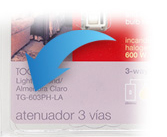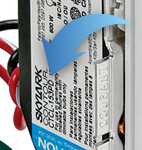
Explore Knowledge Articles
Ghosting / Blinking LED Lights with Caseta Dimmers
Dimming LEDs: Common problems and how to work through them
When you dim LEDs, you expect the same performance you get when dimming incandescent bulbs. Unfortunately, it doesn't always pan out that way and can be frustrating.
We understand the challenges that come with dimming LEDs and are here to help you work through the issues as best as you can. Please keep in mind that you may need to change your LED bulbs or the dimmer you are using so that they are compatible. Compatibility between the dimmer and the bulb is key to better LED performance.
This article will help you to better understand what causes the lamps to flick or flash and will also provide solutions
What causes LED bulb ghosting?
In most cases, when you turn a standard dimmer off, the electronics inside do not receive any power. Caseta wireless digital smart dimmers still need to receive a small amount of power to be able to receive RF signals. This tiny bit of current can cause this bulb ghosting phenomenon. Most LEDs are now designed to ignore this small amount of current, but some are more sensitive than others.
What can you do about it?
-
Make sure your Lutron Dimmer and LED bulb(s) are compatible
There aren't any manufacturing standards for LEDs, which means they differ from bulb to bulb. Even though a bulb may say that it is dimmable, some will dime down further and smoother than others. Some bulbs perform best only when working with a specific type of dimmer. This can make choosing the right dimmer and compatible bulbs difficult.
Lutron is one manufacturer that tests the latest LED bulbs and posts the ones that we have found to work best. To view Lutron's list of compatible dimmers and tested bulbs, visit the Lutron LED Compatibility Tool
-
Use a dimmer with a neutral wire
If you are using a PD-6CL Caseta dimmer and are unable to resolve your flicker issue by changing bulbs or adjusting the low end AND you have a neutral connection (typically 2 or more white wires connected together with a wire nut in your electrical box), we would recommend using the PD-5NE Caseta dimmer.
If you are using a PD-5NE already, you can also try changing the phase of the dimmer. All incandescent/halogen/MLV bulbs typically use Forward Phase Dimming Technology. ELV and some LEDs require Reverse Phase Dimming Technology. The PD-5NE is capable of working on both technologies. Please see the instructions below for checking and setting the dimmer phase on a PD-5NE dimmer.
For more information on adjusting limits or other advanced features of your Caseta wireless dimmers, please see the Caseta Wireless Advanced Guide
-
Change out one bulb for an incandescent/halogen
Because this is not ideal, this is the last resort. If you do not want to change all of your LED lamps, then you can insert an incandescent / halogen bulb into the circuit. This can help to stabilize the other LED lamps and improve the dimming performance.


